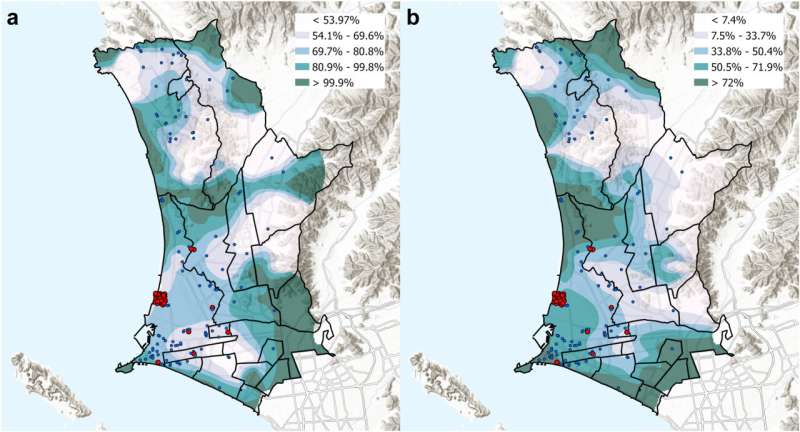This article has been reviewed according to Science X's editorial process and policies. Editors have highlighted the following attributes while ensuring the content's credibility:
fact-checked
trusted source
proofread
Research links prison time with increase of TB

Tuberculosis, the main cause of death due to a single pathogen globally, causes more than 1.5 million deaths each year. New research from the University of Cincinnati finds that being in prison or being a former prisoner is responsible for high rates of multidrug-resistant (MDR) TB.
The study was published in The Lancet Regional Health—Americas.
"Tuberculosis is a huge public health problem globally, and there are about a half million people who are diagnosed with MDR-TB every year," says Moises Huaman, MD, of the Division of Infectious Diseases at the UC College of Medicine. "MDR-TB is difficult to treat; these patients may require longer treatments, and the risk of treatment failure and death are higher."
MDR-TB is tuberculosis that is caused by a strain of bacteria that is resistant to isoniazid and rifampicin, the two core antibiotics of first-line TB treatment.
The research is a collaboration between UC, the Center for Technological, Biomedical, and Environmental Research (CITBM) in Peru, the Research Center Borstel in Germany, and researchers in Brazil, Spain, and Italy. The investigators sought to identify resistant patterns and key drivers of recent MDR-TB transmission in a TB-prevalent area of Peru.
"We were interested in understanding how MDR-TB is transmitted in hot spots in Lima/Callao, Peru," says Huaman, who is also the medical director of the Hamilton County TB Control Clinic.
"We studied 171 TB strains from 2017 to 2019 that were processed in Callao. All those strains were coming from patients diagnosed with MDR-TB. Some of those strains were coming from individuals who were in prison. We found that transmission of MDR-TB is very common in the area. One of the main factors associated with transmission of MDR-TB is either being in prison or having been in prison before."
The researchers identified molecular resistance patterns and defined recent transmissions.
"TB is a disease where if an individual is exposed to the bacteria in prison, this person may not get sick until once they are back out in the community," says Huaman. "That shows that even though the transmission may happen in prisons, MDR-TB and the potential for further spread goes beyond the prison borders and expands into the community.
"Our research identifies prisons as a main driver of the MDR-TB epidemic, and that's important because then you can intervene. You can plan TB screening and control strategies that are focused on prison. Furthermore, having systems through which you can also do screening after people are released from prison is important."
Huaman says a second important finding from the research is that it contradicts traditional thought that the MDR-TB epidemic was primarily driven by patients not taking the medications as prescribed. He says that most of the cases included in the study resulted from the primary transmission of MDR-TB strains, and a main source of that transmission was prisons.
Hopefully, says Huaman, this will lead to more focused interventions.
"There are ongoing efforts to control TB, and I think our data will help the global community get a step further on how important it is to control the MDR-TB epidemic in prisons," he says.
"Our group and others are looking into what are the most cost-effective interventions for TB control and elimination. [For] a disease that links lower socioeconomic conditions and disadvantaged populations, [it's critical] to be able to put together interventions that are sustainable for these vulnerable populations."
More information: Christian Utpatel et al, Prison as a driver of recent transmissions of multidrug-resistant tuberculosis in Callao, Peru: a cross-sectional study, The Lancet Regional Health—Americas (2024). DOI: 10.1016/j.lana.2024.100674




















